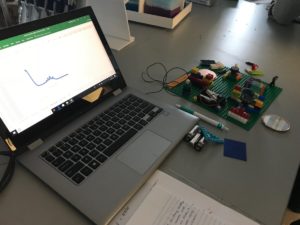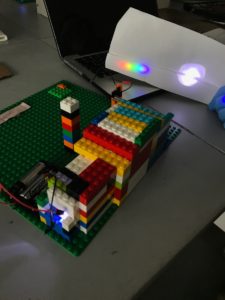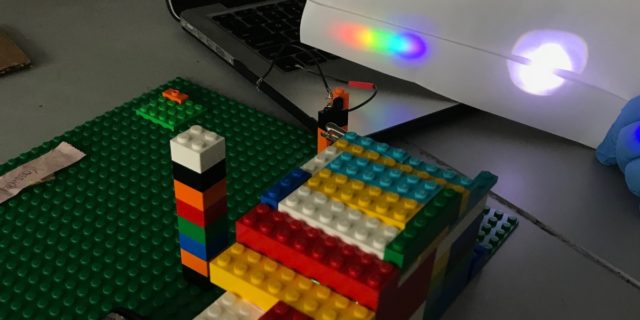How Emmanuel College students are using LEGOs to challenge traditional materials and tools used in experiments.
LEGOs, for some a toy from a distant past, but for the students in Dr. Aren Gerdon’s Instrumental Methods of Analysis class, Legos are helping lay down the “building blocks” for a new kind of design. The class utilized these multi-colored nostalgia-evoking blocks to build an instrument that can measure the traces of red dye in various substances. As children, LEGOs were used to create large towers and elaborate spaceships, but now students are incorporating these children’s toy and challenging the traditional materials and tools used in scientific research settings. Since 2012, The LEGO Group has become the world’s most valuable toy company with an estimated value at over 14.6 billion dollars. With all of the many pieces and sets, the possibilities for creation are endless, and is fueling many future generations to “Just Imagine”. When initially walking into the lab students were hard at work using duck tape, wire cutters, and of course LEGOs to create their designs. Every student’s concept and design was totally original, and every design and implementation of the Legos were entirely unique. The students were also able to use the Cardinal Cushing Libraries new “Discovery Lab” to assist in the lab. Located behind the reference desk, “Discovery Lab” is home to many pieces of exciting technology. Housing items such as a sewing machine, button maker, several 3D printers, a green screen, a Cricket Paper Cutter machine, a VR headset and lots of art supplies are available. The students in Dr. Gerdon’s class were able to utilize the 3D printer to assist in their experiment in addition to the LEGOs and other materials. This project enabled the students to use their imaginations to create a project distinctly unique using everyday materials to help facilitate the experiment. Despite LEGOs being incredibly painful to step on, their immersion into the classroom and the laboratory will help inspire many generations to continue creating, imagining, and experimenting.


~Written by Molly Keane ’22



Recent Comments